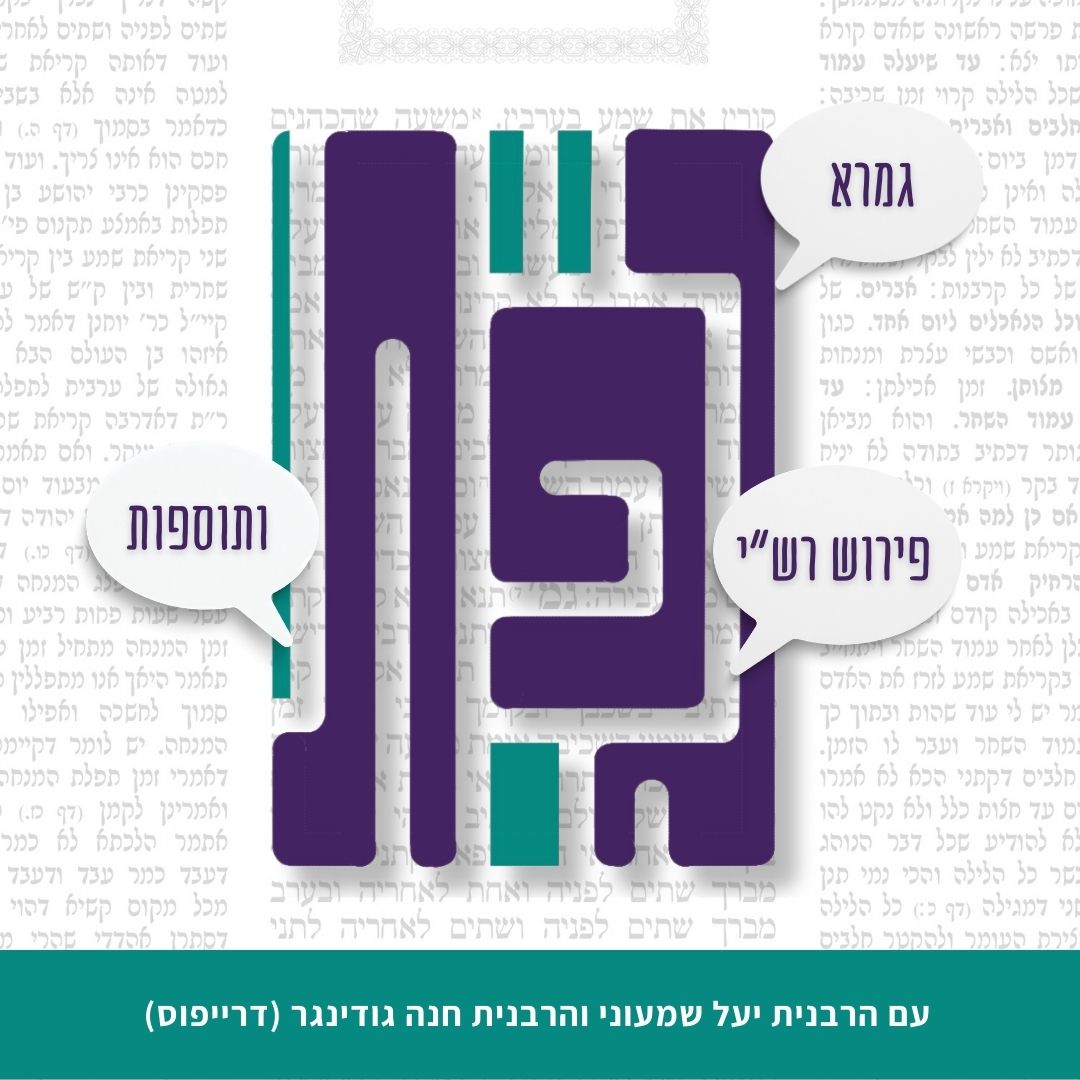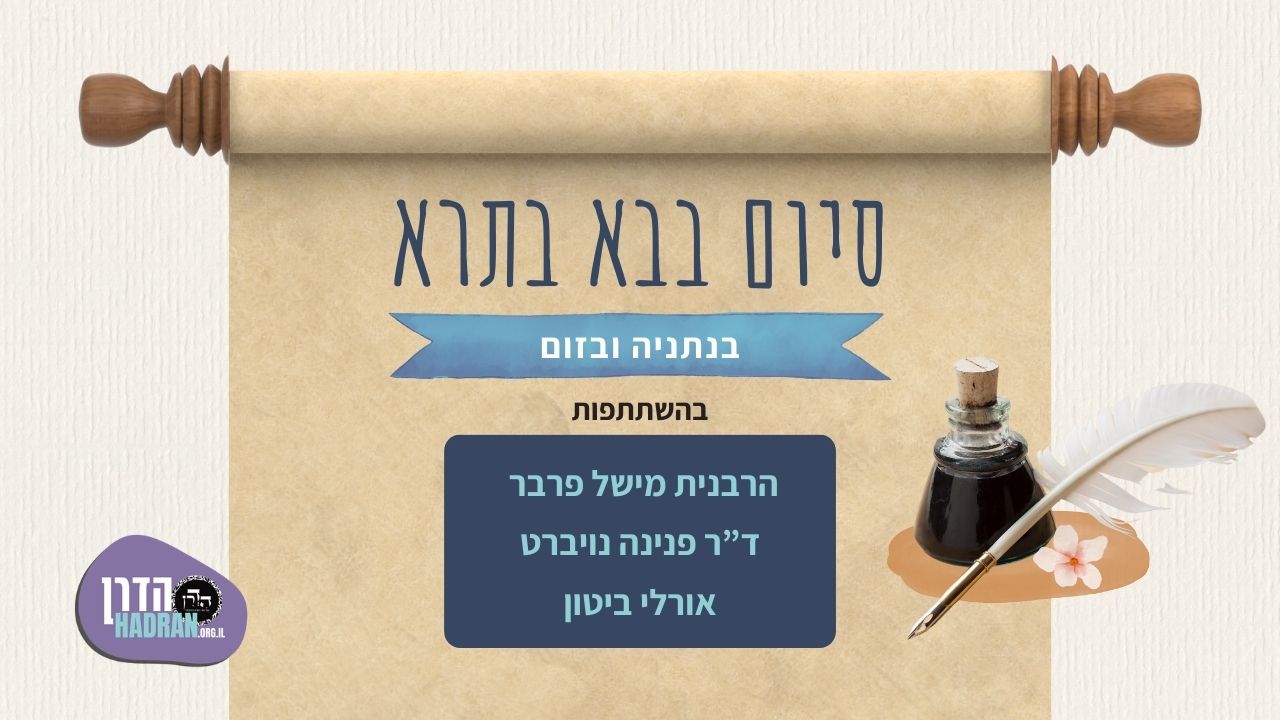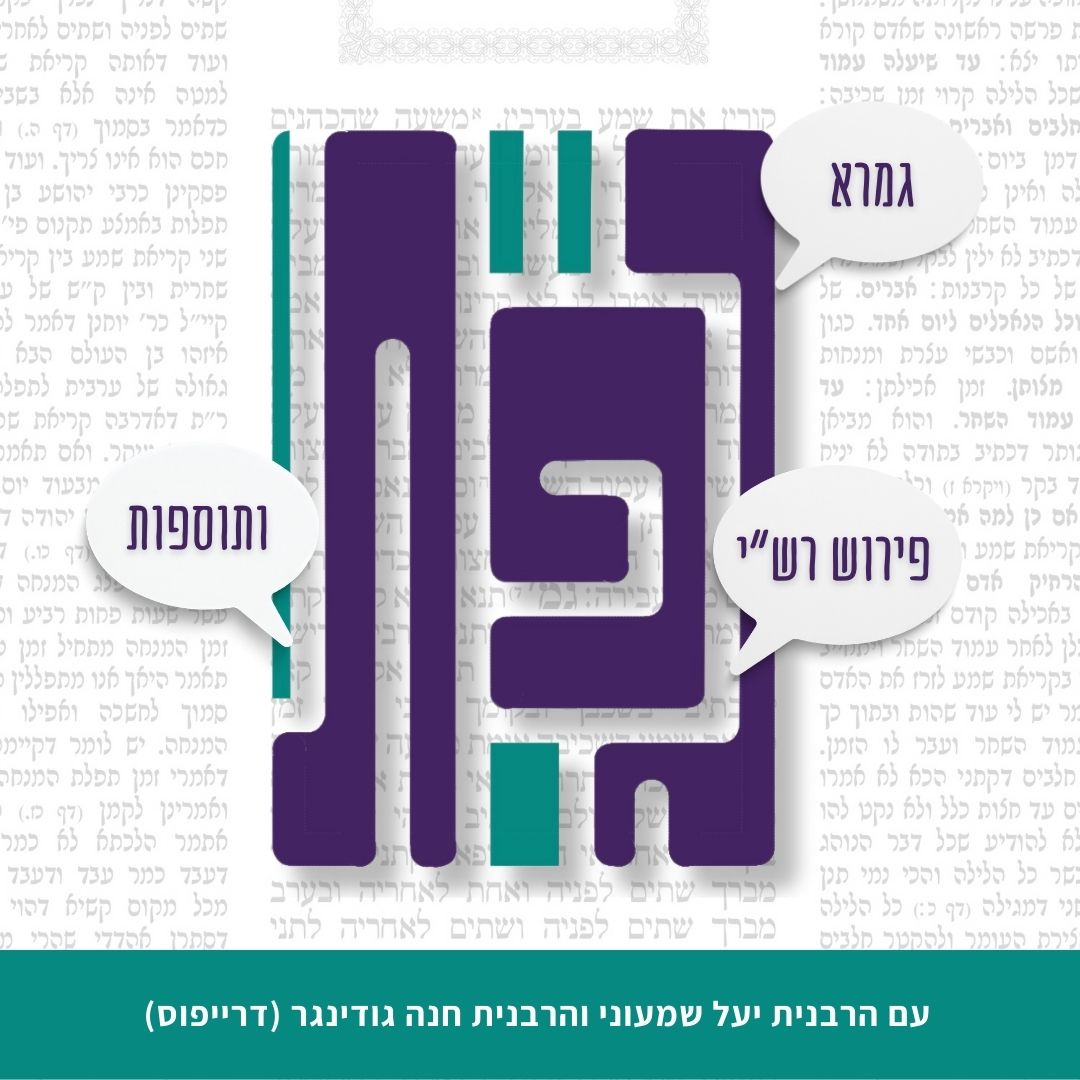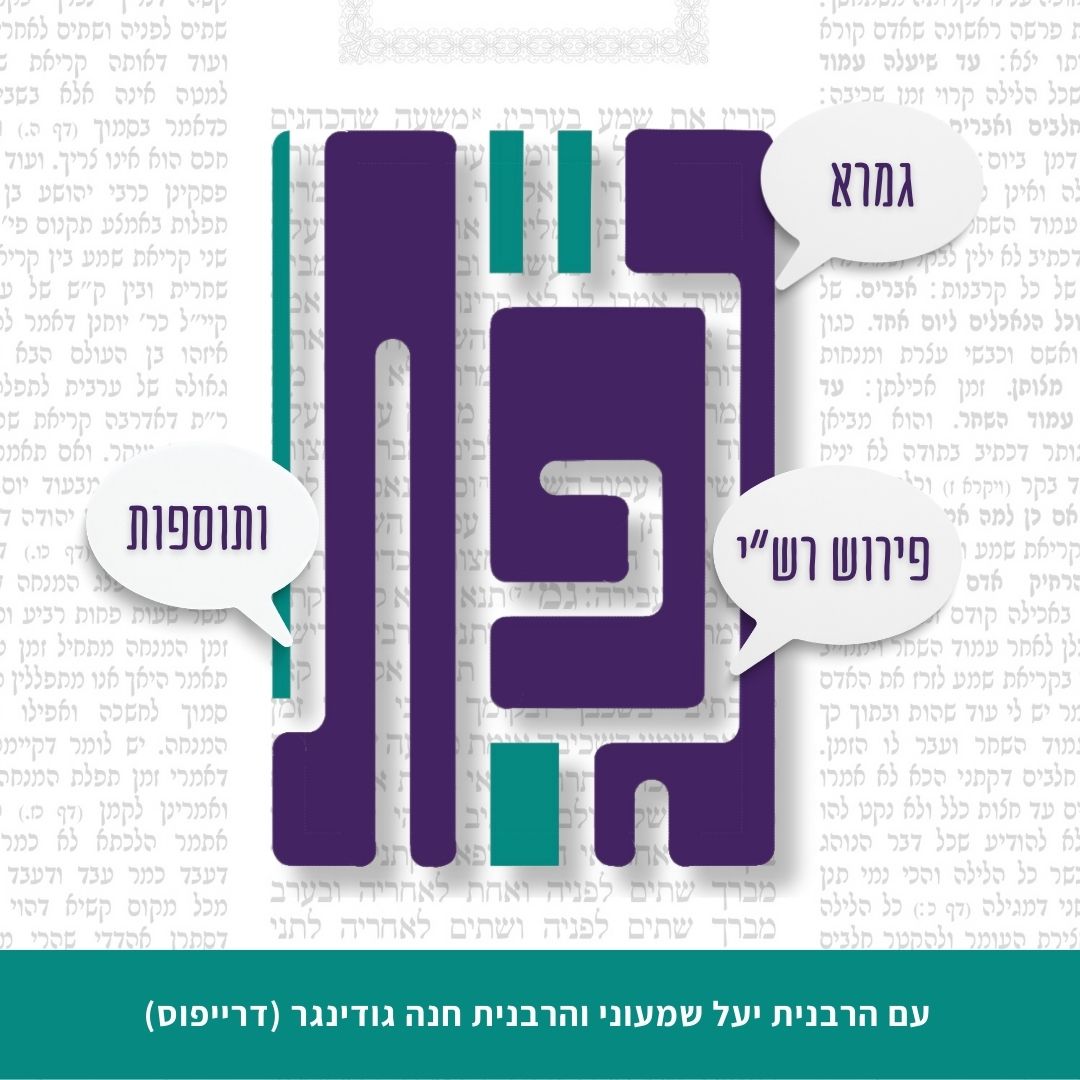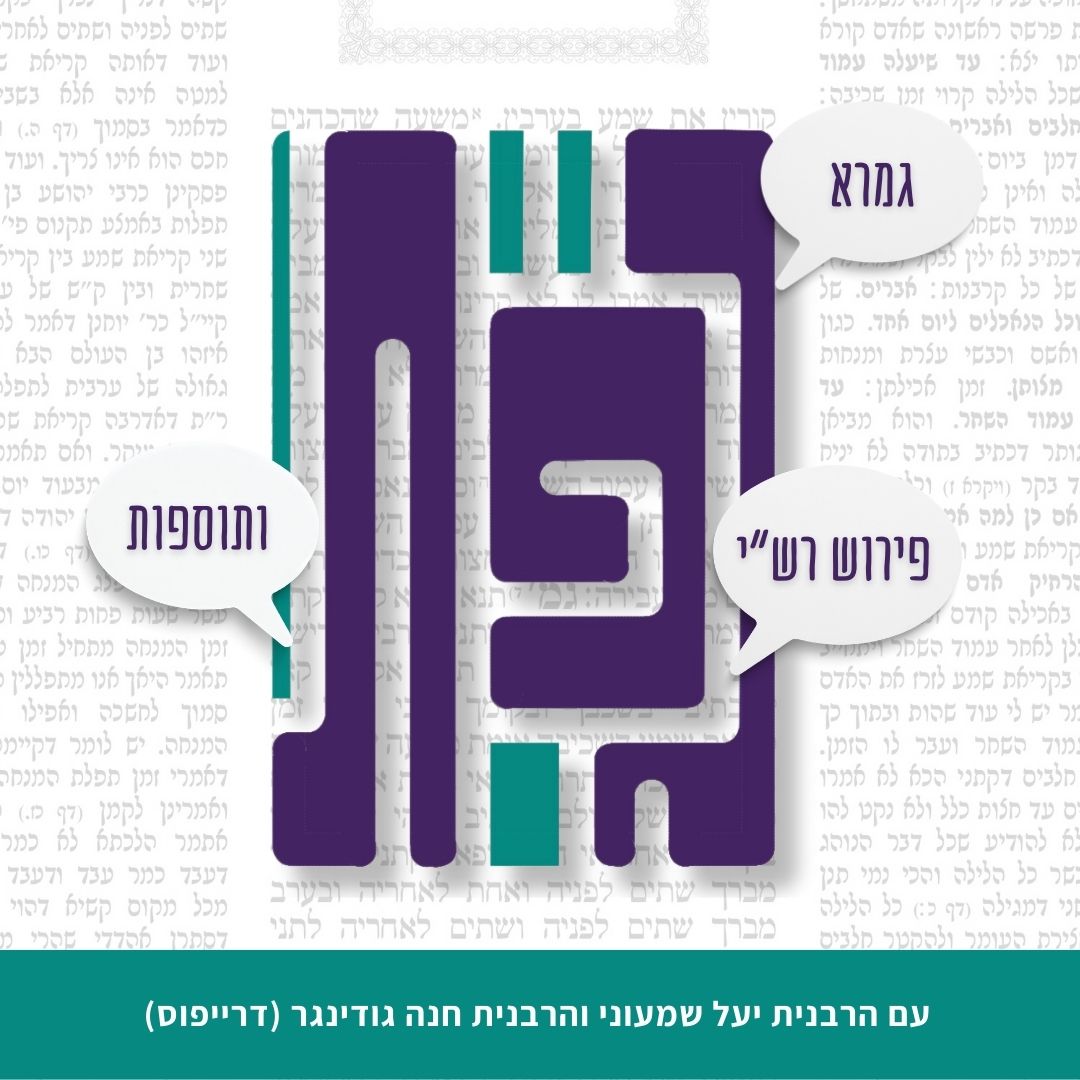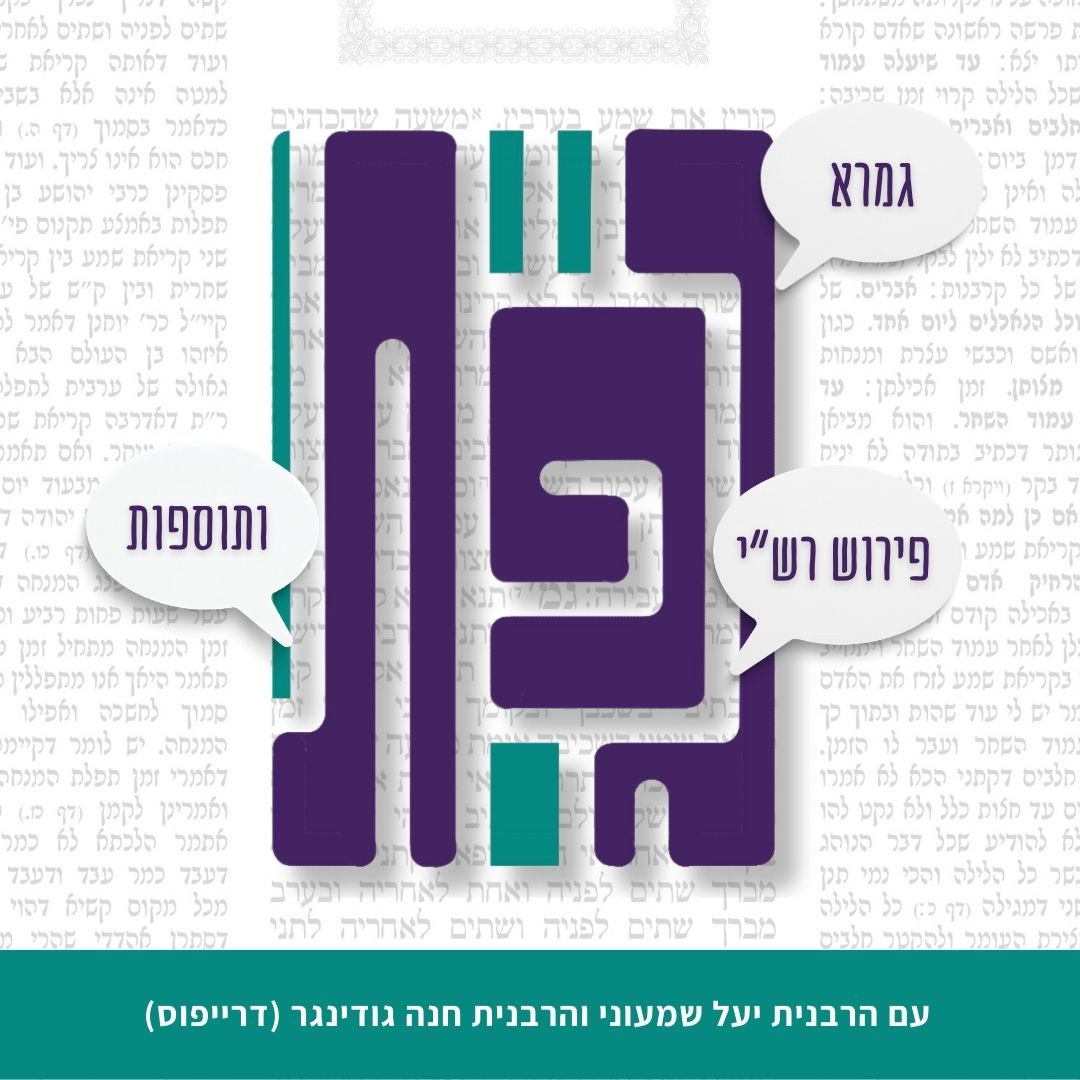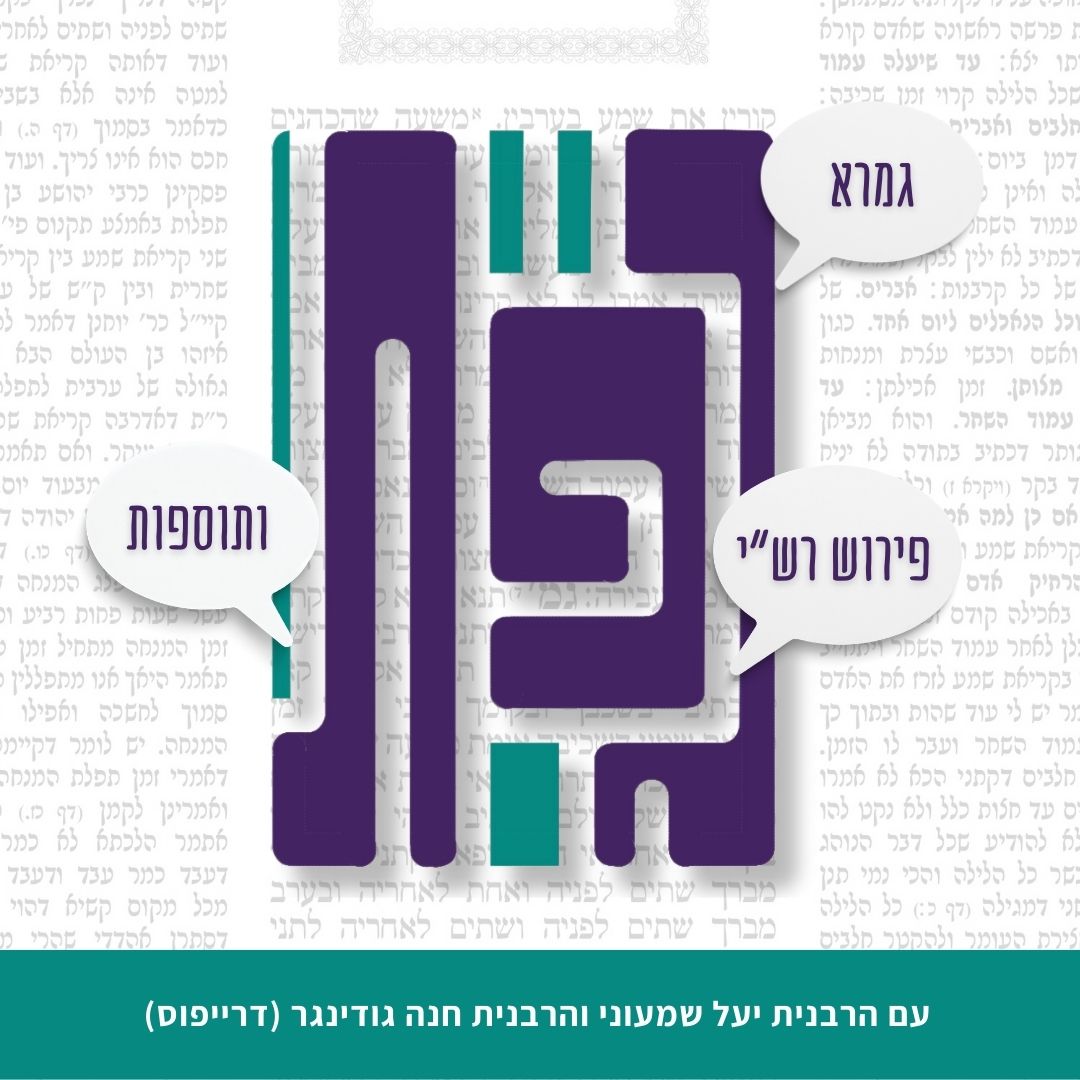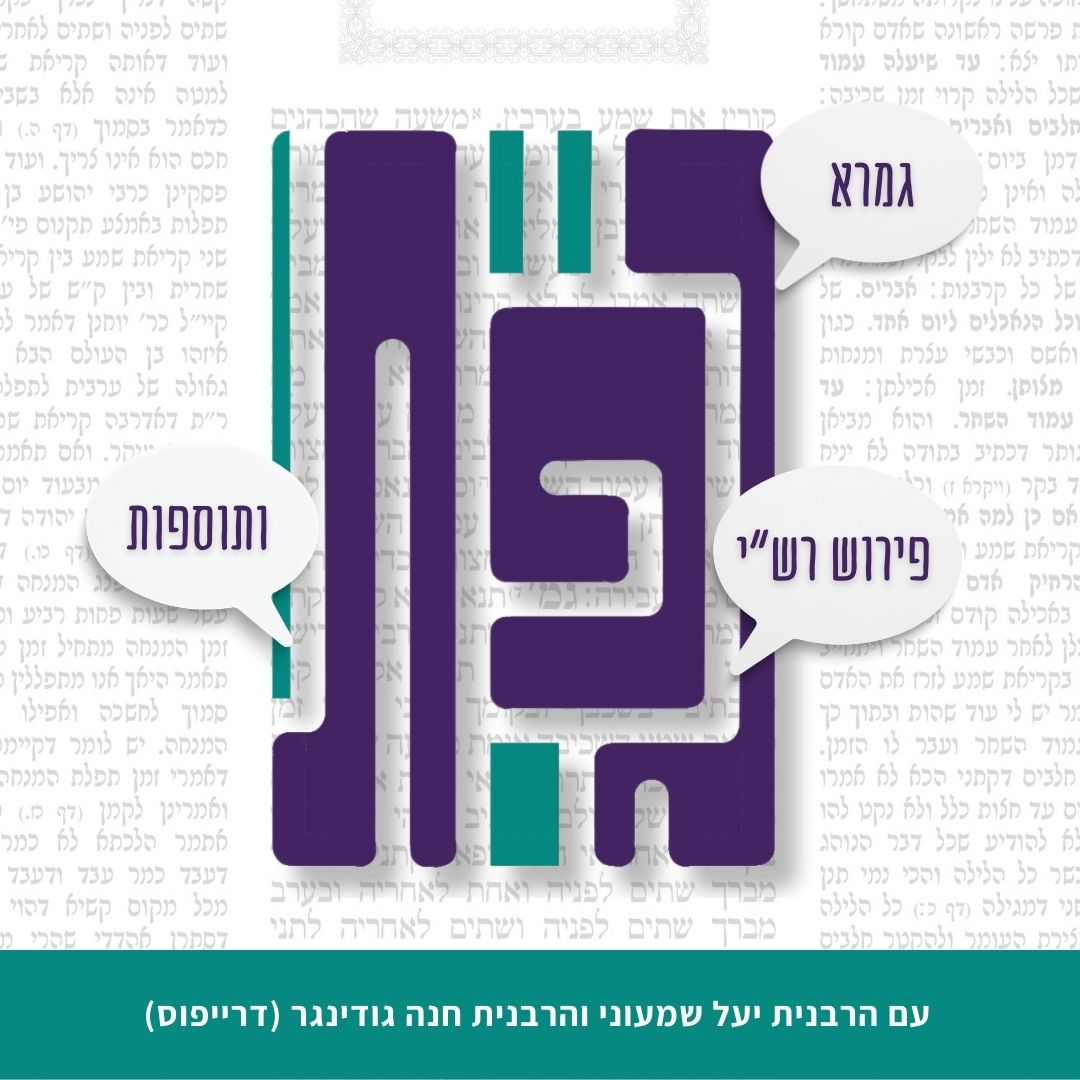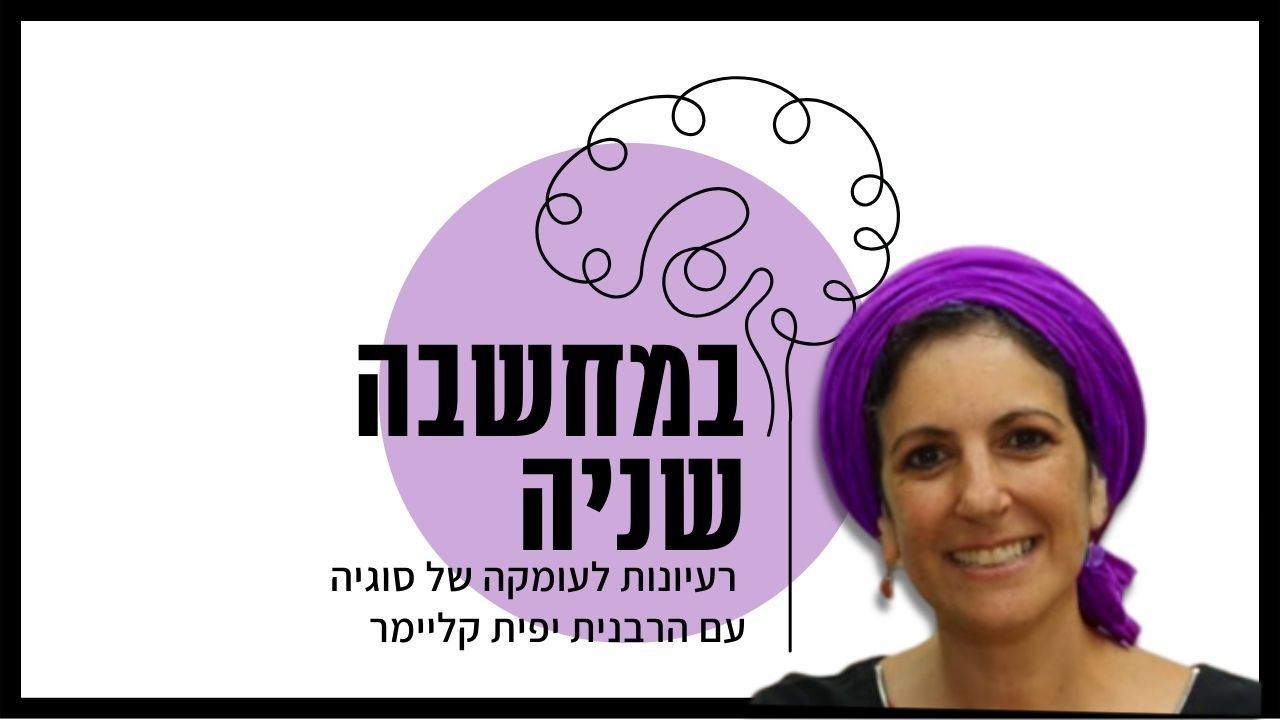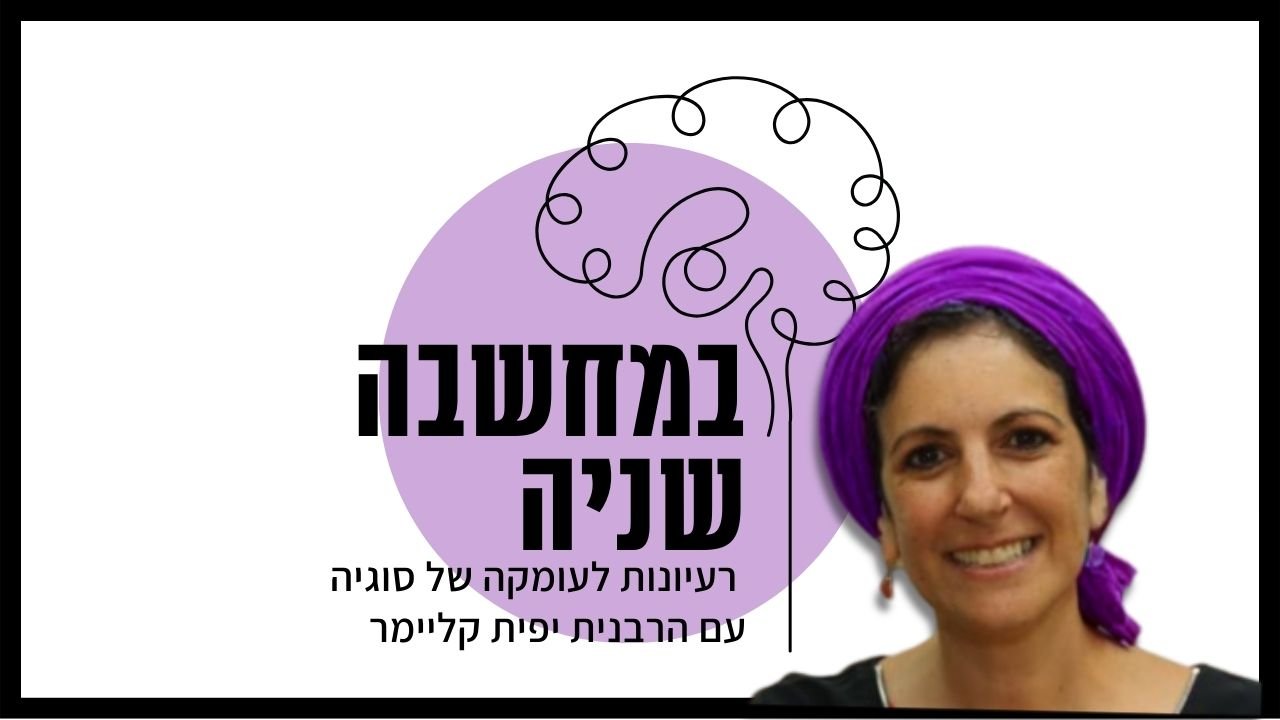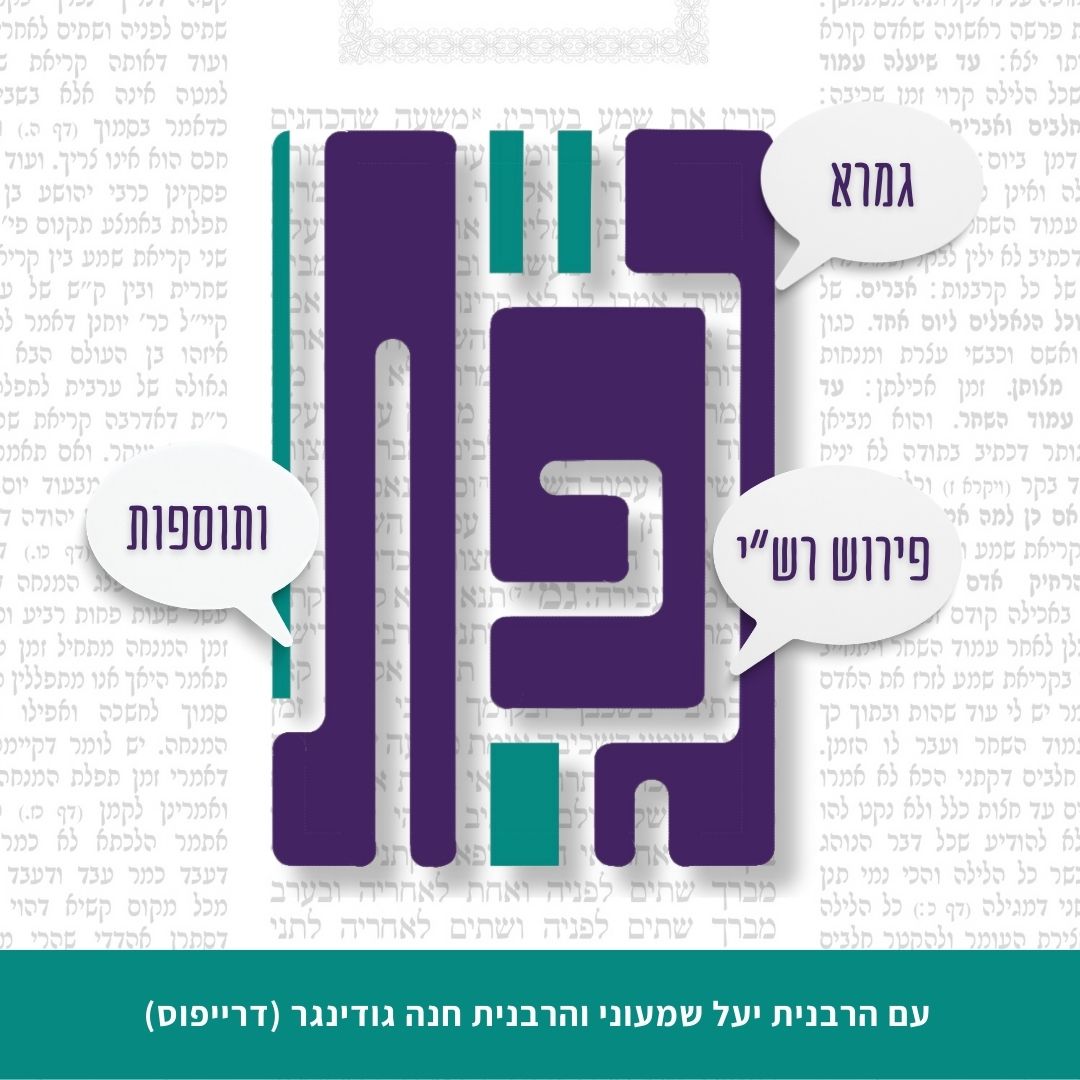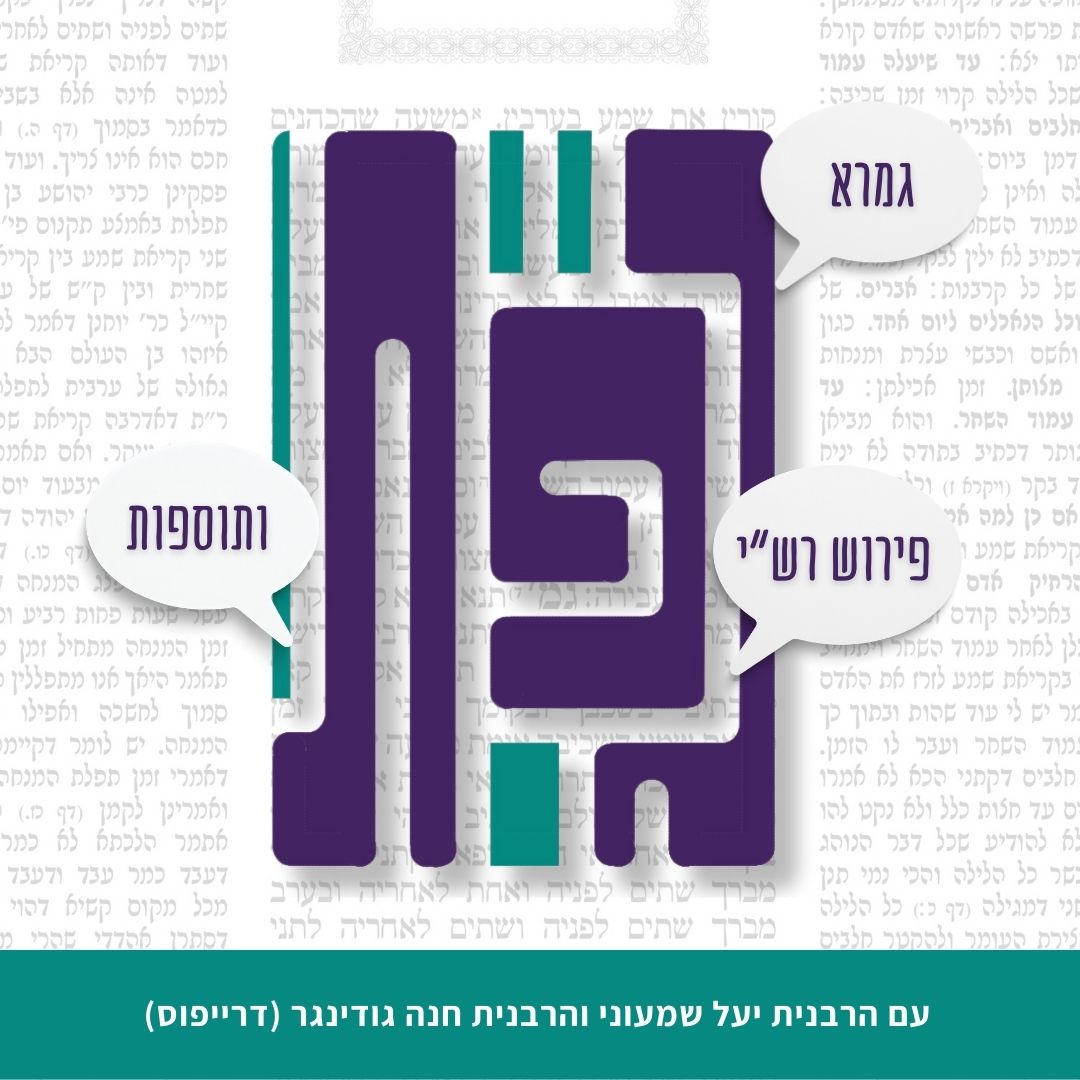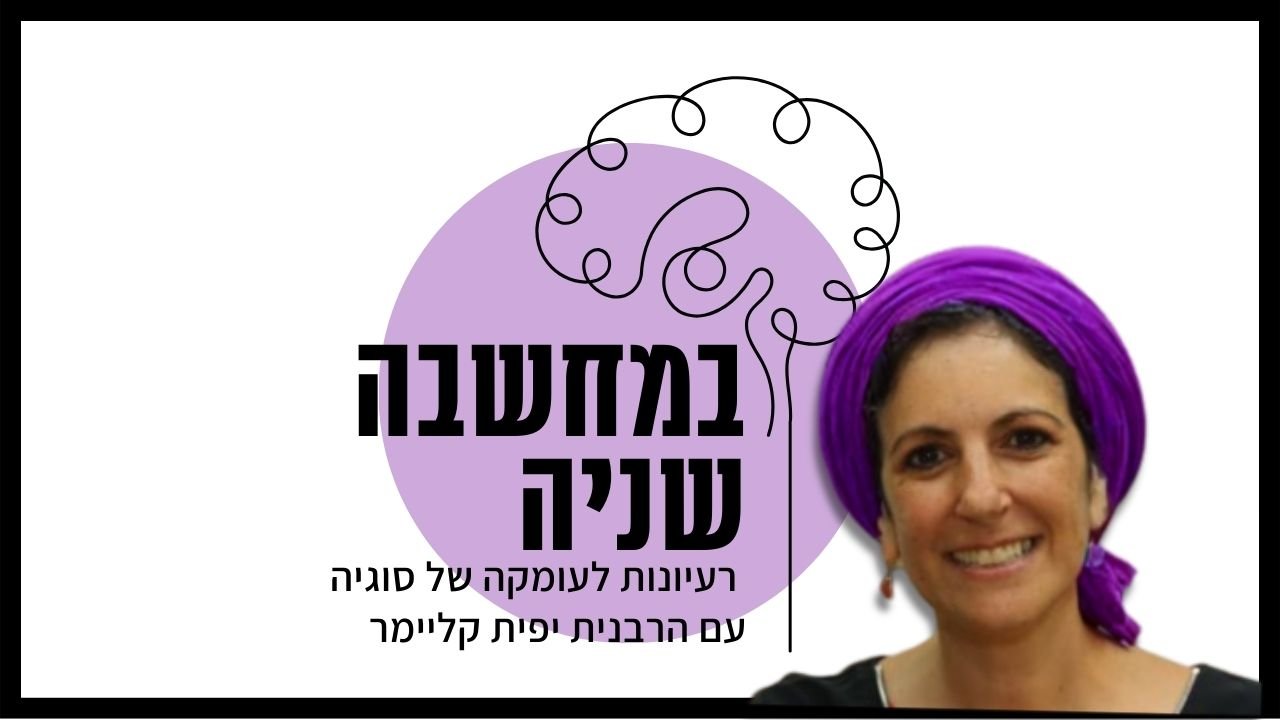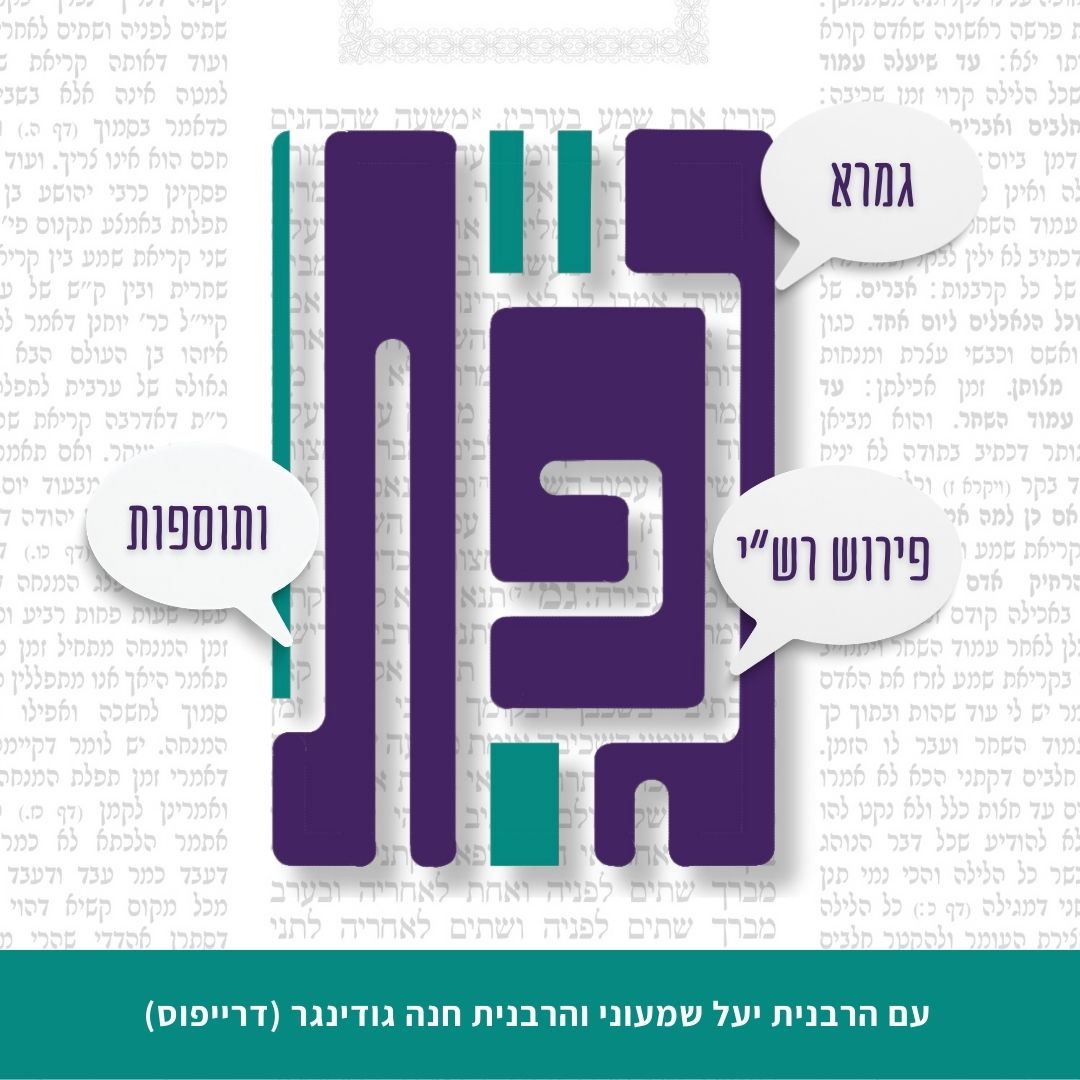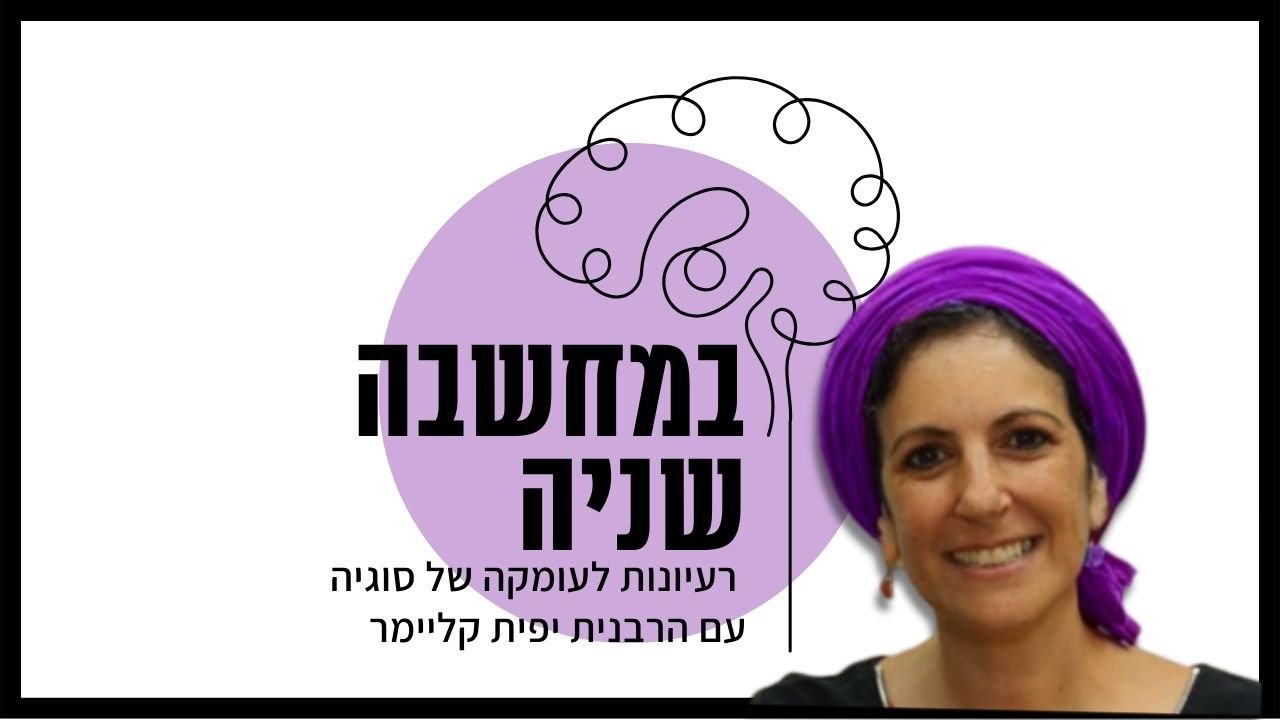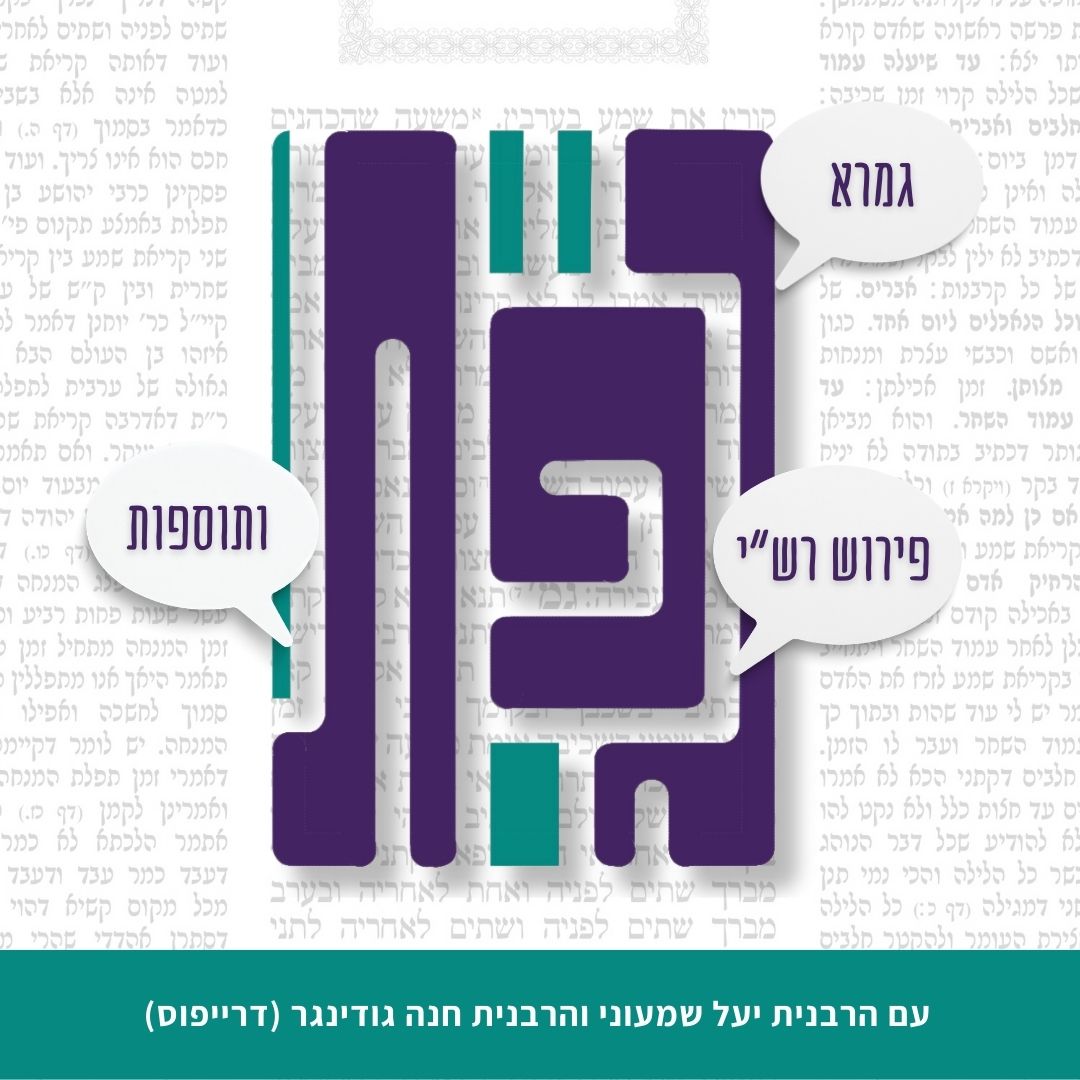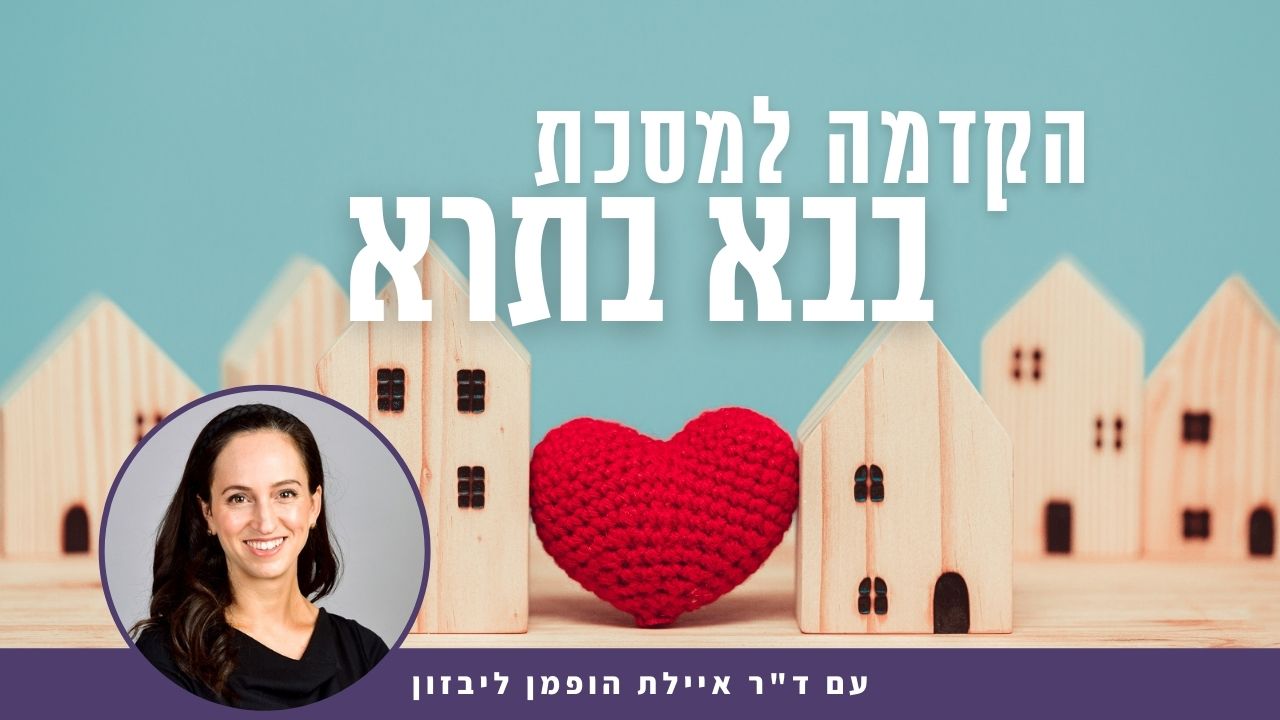בבא בתרא קסח
כֵּיוָן שֶׁהִגִּיד, שׁוּב אֵינוֹ חוֹזֵר וּמַגִּיד; צוּרְבָּא מֵרַבָּנַן לָאו אוֹרְחֵיהּ לְמֵידַק.
Once one has stated his testimony he may not then state a revision, this case of Rav Yirmeya is an exception, and he can retract his initial statement in which he supported the woman’s claim. The reason is that it is not the manner of a Torah scholar to be careful about identifying women, for reasons of modesty.
הָהוּא תְּבָרָא דַּהֲוָה חֲתִים עֲלֵיהּ רַב יִרְמְיָה בַּר אַבָּא. אֲמַרָה לֵיהּ: לָאו אֲנָא הֲוַאי. אָמַר לַהּ: אִיבְרָא אַנְתְּ הֲוִת. אֲמַר אַבָּיֵי: אַף עַל גַּב דְּצוּרְבָּא מֵרַבָּנַן לָאו אוֹרְחֵיהּ לְמֵידַק, כֵּיוָן דְּדָק – דָּק.
The Gemara relates: There was a certain receipt of payment for a marriage contract upon which Rav Yirmeya bar Abba was signed. A woman whose name appeared on the receipt, who was seeking to collect payment of her marriage contract, said to him: It was not I, but another woman with the same name, who had this receipt written. He said to her: But it was you, and you are lying now. Abaye said: Although I said that it is not the manner of a Torah scholar to be careful about identifying women, once he is careful about such an identification and states positively that he recognizes a particular woman, he is careful.
אָמַר אַבָּיֵי: הַאי צוּרְבָּא מֵרַבָּנַן דְּאָזֵיל לְקַדּוֹשֵׁי אִיתְּתָא – נִידְבַּר עַם הָאָרֶץ בַּהֲדֵיהּ, דִּלְמָא מְחַלְּפוּ לַהּ מִינֵּיהּ.
Abaye said: A Torah scholar who goes to betroth a woman should take an ignoramus with him to establish a positive identity of the woman, lest people exchange another woman for her when given to him for marriage, taking advantage of his innocence.
וְהַבַּעַל נוֹתֵן שָׂכָר וְכוּ׳. מַאי טַעְמָא? דְּאָמַר קְרָא: ״וְכָתַב״ ״וְנָתַן״. וְהָאִידָּנָא דְּלָא עָבְדִינַן הָכִי, שַׁדְיוּהוּ רַבָּנַן אַאִשָּׁה כִּי הֵיכִי דְּלָא לְשַׁהֲיֵיהּ.
§ The mishna teaches that the husband gives the scribe’s wages for writing a bill of divorce. The Gemara asks: What is the reason for this? The Gemara answers: As the verse states: “When a man takes a wife and marries her, and it comes to pass, if she finds no favor in his eyes, because he has found some unseemly matter in her, he shall write her a scroll of severance and give it in her hand” (Deuteronomy 24:1). It is therefore the husband’s responsibility to have the bill of divorce written. The Gemara adds: But today, the reason that we do not do so, but instead have the woman pay the scribe, is that the Sages placed the burden upon the woman, so that the husband should not delay the divorce by refusing to pay the scribe.
כּוֹתְבִין שְׁטָר לַלֹּוֶה – אַף עַל פִּי שֶׁאֵין מַלְוֶה עִמּוֹ וְכוּ׳. פְּשִׁיטָא! לָא צְרִיכָא, בְּעִיסְקָא.
The mishna teaches: A scribe may write a promissory note for a debtor who requests one, even if the creditor is not with him, and it is the debtor who gives the scribe his wages. The Gemara asks: Isn’t it obvious that the debtor pays the wages? After all, he is the beneficiary of the loan. The Gemara answers: No, it is necessary for the mishna to state this, as there are times when the loan is beneficial to the creditor as well, as in a case of a joint venture, where the creditor receives a share of the profits engendered by the money provided to the borrower (see Bava Metzia 104a).
כּוֹתְבִין שְׁטָר לַמּוֹכֵר אַף עַל פִּי שֶׁאֵין לוֹקֵחַ וְכוּ׳. פְּשִׁיטָא! לָא צְרִיכָא, בְּמוֹכֵר שָׂדֵהוּ מִפְּנֵי רָעָתָהּ.
The mishna teaches: A scribe may write a bill of sale for a seller of property who requests one, even if the purchaser is not with him when he presents his request, and it is the purchaser who provides the scribe’s wages. The Gemara asks: Isn’t it obvious that the purchaser pays the wages? After all, he is the beneficiary of the sale. The Gemara answers: No, it is necessary for the mishna to state this, as sometimes the sale is beneficial to the seller as well, as in a case of one who sells a field because of its poor quality, as he is anxious to be rid of it.
אֵין כּוֹתְבִין שְׁטָרֵי אֵירוּסִין וְכוּ׳. פְּשִׁיטָא! לָא צְרִיכָא, דַּאֲפִילּוּ צוּרְבָּא מֵרַבָּנַן דְּנִיחָא לֵיהּ לַחֲמוּהּ לְקָרוֹבֵיהּ.
The mishna teaches: A scribe may not write documents of betrothal and documents of marriage except with the consent of both the groom and the bride, and it is the groom who provides the scribe’s wages. The Gemara asks: Isn’t it obvious that the groom pays the wages? After all, he is the one acquiring his betrothed. The Gemara answers: No, it is necessary for the mishna to state this, to teach us that it applies even when the groom is a Torah scholar, in which case it gives his father-in-law satisfaction to bring him into his family by having him marry his daughter. Even in such a case, where the bride’s family is a beneficiary, it is the groom who pays the wages.
אֵין כּוֹתְבִין שְׁטַר אֲרִיסוּת וְקַבְּלָנוּת וְכוּ׳. פְּשִׁיטָא! לָא צְרִיכָא, בְּבוּרָה.
The mishna teaches: A scribe may not write contracts for sharecroppers and contractors except with the consent of both parties, i.e., the sharecropper or contractor and the one who hires him, and it is the sharecropper or contractor who provides the scribe’s wages. The Gemara asks: Isn’t it obvious that the contractor pays the wages? After all, the contract details his rights to the field. The Gemara answers: No, it is necessary for the mishna to state this, as sometimes the deal is detrimental to the contractor, as in the case of a fallow field. It might have been thought that in this case the cost of the document is borne by the landowner.
אֵין כּוֹתְבִין שְׁטָרֵי בֵירוּרִין אֶלָּא מִדַּעַת שְׁנֵיהֶם וְכוּ׳. מַאי ״שְׁטָרֵי בֵירוּרִין״? הָכָא תַּרְגִּימוּ: שְׁטָרֵי טַעֲנָתָא. רַב יִרְמְיָה בַּר אַבָּא אָמַר: זֶה בּוֹרֵר לוֹ אֶחָד, וְזֶה בּוֹרֵר לוֹ אֶחָד.
The mishna teaches: A scribe may not write documents testifying to arbitration or any other court enactment except with the consent of both parties to the litigation. The Gemara asks: What is meant by documents testifying to arbitration? Here in Babylonia the Sages interpreted it to mean documents recording the claims of the two parties to the litigation. Rav Yirmeya bar Abba says: A document testifying to arbitration is one that records the procedure in which the composition of the court is chosen, as described in tractate Sanhedrin (23a), whereby this litigant chooses one judge and that litigant chooses one judge, and these two judges choose the third one.
רַבָּן שִׁמְעוֹן בֶּן גַּמְלִיאֵל אוֹמֵר: לִשְׁנֵיהֶם כּוֹתְבִין שְׁנַיִם – לְזֶה בְּעַצְמוֹ וּלְזֶה בְּעַצְמוֹ. לֵימָא בְּכוֹפִין עַל מִדַּת סְדוֹם קָא מִיפַּלְגִי –
§ The mishna teaches that Rabban Shimon ben Gamliel says: The scribe writes two documents for the two parties, one for this one by himself and one for that one by himself. The Gemara analyzes the disagreement between Rabban Shimon ben Gamliel and the first tanna, who did not call for two separate documents: Shall we say that they disagree with regard to the principle that the court coerces people to prevent conduct characteristic of Sodom, i.e., selfish behavior? That is, the case is where one of the litigants does not want to contribute to the writing of a joint document, and insists that each litigant pay to have his own document written, which would entail an additional expenditure on the part of the other party.
דְּמָר סָבַר: כּוֹפִין, וּמַר סָבַר: אֵין כּוֹפִין?
The dispute is then as follows: As one Sage, the first tanna, holds that the court coerces people to prevent this conduct, so the obstinate litigant is forced to pay his share of a joint document, and one Sage, Rabban Shimon ben Gamliel, holds that the court does not coerce people to prevent this conduct, and a litigant can insist upon paying only for a document of his own.
לָא, דְּכוּלֵּי עָלְמָא כּוֹפִין; וְהָכָא הַיְינוּ טַעְמָא דְּרַבָּן שִׁמְעוֹן בֶּן גַּמְלִיאֵל – דַּאֲמַר לֵיהּ: לָא נִיחָא לִי דְּתֶהְוֵי זְכוּתָךְ גַּבֵּי זְכוּתִי, דְּדָמֵית עֲלַאי כִּי אַרְיָא אָרְבָא.
The Gemara rejects this analysis: No, everyone in the mishna holds that the court coerces people to prevent conduct characteristic of Sodom, and here this is the reason for the ruling of Rabban Shimon ben Gamliel: It is because the litigant demanding separate documents is not making a pointless, selfish request at all, as he says to the other litigant: It is not amenable for me that your defense, i.e., the record of your claims, should be together with my defense, as you are to me like an ambushing lion, i.e., our interests are in conflict.
מַתְנִי׳ מִי שֶׁפָּרַע מִקְצָת חוֹבוֹ, וְהִשְׁלִישׁ אֶת שְׁטָרוֹ – וְאָמַר לוֹ: ״אִם לֹא נָתַתִּי לְךָ מִכָּאן וְעַד יוֹם פְּלוֹנִי, תֵּן לוֹ שְׁטָרוֹ״, הִגִּיעַ זְמַן וְלֹא נָתַן – רַבִּי יוֹסֵי אוֹמֵר: יִתֵּן, רַבִּי יְהוּדָה אוֹמֵר: לֹא יִתֵּן.
MISHNA: In the case of a debtor who repaid part of his debt and with the agreement of the creditor deposited the promissory note with a third party serving as a trustee to ensure that the creditor would not collect the full amount, and the debtor said to the trustee: If I have not given you the balance from now until such and such a day, give the creditor his promissory note, thereby enabling him to collect the full amount stated on the note, if the stipulated time arrived and the debtor did not give the balance to the trustee, Rabbi Yosei says: The trustee should give the promissory note to the creditor, in accordance with the debtor’s stipulation. Rabbi Yehuda says: The trustee should not give it, as the stipulation is void.
גְּמָ׳ בְּמַאי קָמִיפַּלְגִי? רַבִּי יוֹסֵי סָבַר: אַסְמַכְתָּא קָנְיָא, וְרַבִּי יְהוּדָה סָבַר: אַסְמַכְתָּא לָא קָנְיָא.
GEMARA: With regard to what principle do Rabbi Yosei and Rabbi Yehuda disagree? Rabbi Yosei holds that a transaction with inconclusive consent [asmakhta] effects acquisition. In this case, the debtor willingly undertook a penalty if he would not repay the remainder of the debt on time. Yet, he did not think that he would miss the deadline and be held accountable to pay that penalty. Rabbi Yosei holds that he is nevertheless bound by his word. And Rabbi Yehuda holds that an asmakhta does not effect acquisition, i.e., it is not binding.
אָמַר רַב נַחְמָן אָמַר רַבָּה בַּר אֲבוּהּ אָמַר רַב: הֲלָכָה כְּרַבִּי יוֹסֵי. כִּי אֲתוֹ לְקַמֵּיהּ דְּרַבִּי אַמֵּי, אֲמַר לְהוּ: וְכִי מֵאַחַר שֶׁרַבִּי יוֹחָנָן מְלַמְּדֵנוּ פַּעַם רִאשׁוֹנָה וּשְׁנִיָּה הֲלָכָה כְּרַבִּי יוֹסֵי, אֲנִי מָה אֶעֱשֶׂה?
Rav Naḥman says that Rabba bar Avuh says that Rav says: The halakha is in accordance with the opinion of Rabbi Yosei. When questioners came before Rabbi Ami, inquiring of him what the halakha is in this matter, he said to them: But since it is the case that Rabbi Yoḥanan taught us a first time and a second time, i.e., repeatedly, that the halakha is in accordance with the opinion of Rabbi Yosei, what can I do to contradict his words?
וְאֵין הֲלָכָה כְּרַבִּי יוֹסֵי.
The Gemara concludes: But in fact the halakha is not in accordance with the opinion of Rabbi Yosei, i.e., an asmakhta is not binding.
מַתְנִי׳ מִי שֶׁנִּמְחַק שְׁטַר חוֹבוֹ – מַעֲמִיד עָלָיו עֵדִים, וּבָא לִפְנֵי בֵּית דִּין, וְעוֹשִׂין לוֹ קִיּוּם: ״אִישׁ פְּלוֹנִי בֶּן פְּלוֹנִי נִמְחַק שְׁטָרוֹ בְּיוֹם פְּלוֹנִי,
MISHNA: In the case of a creditor whose promissory note has become erased, he should produce witnesses who remember the details of the document to testify about it. And they come before the court, and they ratify his promissory note for him, stating: The promissory note of so-and-so was erased, and it stated that a loan for such and such an amount took place on such and such a date,
וּפְלוֹנִי וּפְלוֹנִי עֵדָיו״.
and so-and-so and so-and-so were its witnesses. The ratification document is signed, and it may be used as a replacement for the erased document.
גְּמָ׳ תָּנוּ רַבָּנַן: אֵיזֶהוּ קִיּוּמוֹ? ״בְּמוֹתַב תְּלָתָא הֲוֵינָא אָנוּ פְּלוֹנִי וּפְלוֹנִי וּפְלוֹנִי, הוֹצִיא פְּלוֹנִי בֶּן פְּלוֹנִי שְׁטָר מָחוּק לְפָנֵינוּ בְּיוֹם פְּלוֹנִי, וּפְלוֹנִי וּפְלוֹנִי עֵדָיו״. וְאִם כָּתוּב בּוֹ: ״הוּזְקַקְנוּ לְעֵדוּתָן שֶׁל עֵדִים, וְנִמְצֵאת עֵדוּתָן מְכֻוֶּונֶת״ – גּוֹבֶה, וְאֵינוֹ צָרִיךְ לְהָבִיא רְאָיָה. וְאִם לָאו, צָרִיךְ לְהָבִיא רְאָיָה.
GEMARA: The Sages taught (Tosefta, Bava Metzia 1:16): What is the text of the ratification document of an erased document? The court writes as follows: We, so-and-so and so-and-so and so-and-so, were sitting as three judges, and so-and-so, son of so-and-so, produced an erased document before us, which was written on such and such a date, and so-and-so and so-and-so were its witnesses. And if it is written in this ratification document also: We engaged in the investigation of the testimony of the witnesses and their testimony has been found to be congruent, the creditor can collect his debt on the basis of this ratification document, and he does not need to bring further proof. But if this formula is not written, the creditor needs to bring further proof of the loan in order to collect it.
נִקְרַע – פָּסוּל, נִתְקָרַע – כָּשֵׁר. נִמְחַק אוֹ נִטַּשְׁטֵשׁ – אִם רִישּׁוּמוֹ נִיכָּר, כָּשֵׁר.
The baraita continues with its discussion of damaged documents: If a promissory note was torn intentionally it is not valid, but if it became torn accidentally it is valid. In a case where it was erased or smudged, if its imprint is recognizable, i.e., if the words are still legible, though barely, it is valid.
הֵיכִי דָּמֵי נִקְרַע, הֵיכִי דָּמֵי נִתְקָרַע? אָמַר רַב יְהוּדָה: נִקְרַע – קֶרַע שֶׁל בֵּית דִּין, נִתְקָרַע – קֶרַע שֶׁאֵינוֹ שֶׁל בֵּית דִּין.
The Gemara seeks to clarify the terms in the second part of the baraita: What are the circumstances, i.e., what are the defining characteristics, of a document that was torn, and what are the circumstances of a document that became torn? Rav Yehuda says: A document that was torn means that it had a tear created by the court, because they wished to render it not valid due to payment of the loan or some other circumstance. A document that became torn means it had a tear that was not created by the court.
הֵיכִי דָּמֵי קֶרַע שֶׁל בֵּית דִּין? אָמַר רַב יְהוּדָה: מְקוֹם עֵדִים וּמְקוֹם הַזְּמַן וּמְקוֹם הַתּוֹרֶף. אַבָּיֵי אָמַר: שְׁתִי וָעֵרֶב.
The Gemara seeks further clarification: What are the circumstances, i.e., what are the signs, of a document that had a tear created by the court? Rav Yehuda says: The document has a tear that ruins the place of the witnesses’ signatures and the place of the date and the place of the essential part of a document. Abaye says: It has a tear that goes both lengthwise and widthwise.
הָנְהוּ עַרְבָאֵי דַּאֲתוֹ לְפוּמְבְּדִיתָא, דַּהֲווֹ קָא אָנְסִי אַרְעָתָא דְאִינָשֵׁי. אֲתוֹ מָרָווֹתַיְהוּ לְקַמֵּיהּ דְּאַבָּיֵי, אֲמַרוּ לֵיהּ: לִיחְזֵי מָר שְׁטָרִין, וְלִכְתּוֹב לַן מָר שְׁטָרָא אַחֲרִינָא עֲלֵיהּ, דְּאִי מִיתְּנִיס חַד – נְקִיטִינַן חַד בִּידַן.
§ The Gemara relates: There was once a certain group of Arabs who came to Pumbedita and who would rob people’s land and force the victims to surrender the deeds to their property to prevent subsequent legal action. The owners of land who had not yet fallen victim to these Arabs came before Abaye and said to him: Let the Master look at our deeds to our property and let the Master write us another deed for it, so that if one of the deeds is robbed we will have the other one in our possession.
אֲמַר לְהוּ: מַאי אֶעֱבֵיד לְכוּ? דְּאָמַר רַב סָפְרָא: אֵין כּוֹתְבִין שְׁנֵי שְׁטָרוֹת עַל שָׂדֶה אַחַת, דִּלְמָא טָרֵיף וַהֲדַר טָרֵיף.
Abaye said to them: What can I do for you? I cannot comply with your request, as Rav Safra says: One may not write two deeds of ownership for one field, lest the owner of that land repossess property once and then go back and repossess it once again. Generally, whenever real estate is sold there is a guarantee given to the purchaser in the event that the land is repossessed by the seller’s creditor or by someone else who proves that the land rightfully belongs to him. If the seller of the repossessed land has no money to honor the guarantee, the purchaser can repossess property from others who had purchased property from the same seller subsequent to the sale of the repossessed land. In order to do so, he would have to produce the bill of sale proving that he had purchased the repossessed property. If he has two such deeds, he would be able to collect payment twice. To eliminate this possibility, duplicate property deeds are not written.
הֲווֹ קָא טָרְדִי לֵיהּ, אֲמַר לֵיהּ לְסָפְרֵיהּ: זִיל כְּתוֹב לְהוּ הוּא עַל הַמְּחָק וְעֵדָיו עַל הַנְּיָיר, דְּפָסוּל.
The landowners kept badgering Abaye to write the duplicate documents, until, in order to be rid of them, he said to his scribe: Go write the document for them, but first write on paper and then erase it, and then write the desired document over the erased text, so that the text of the document will be written over an erasure, and the signatures of its witnesses will be on a part of the paper where the writing had not been erased, a situation in which the document is not valid.
אֲמַר לֵיהּ רַב אַחָא בַּר מִנְיוֹמֵי לְאַבָּיֵי: וְדִלְמָא רִישּׁוּמוֹ נִיכָּר, וְתַנְיָא: נִמְחַק אוֹ נִטַּשְׁטֵשׁ – אִם רִישּׁוּמוֹ נִיכָּר, כָּשֵׁר! אָמַר לֵיהּ: מִי קָאָמֵינָא שְׁטָרָא מְעַלְּיָא? ״אָלֶף בֵּית״ בְּעָלְמָא קָאָמֵינָא.
Rav Aḥa bar Minyumi said to Abaye: But perhaps the first writing on the paper was not erased thoroughly, so its imprint is recognizable, and it is taught in the baraita that in a case where the writing on a document was erased or smudged, if its imprint is recognizable, the document is valid. Abaye said to him: Did I say that he should write a proper document and then erase it? I said, i.e., I intended, that he should merely write letters of the alphabet [alef beit], not actual words.
תָּנוּ רַבָּנַן: הֲרֵי שֶׁבָּא וְאָמַר ״אָבַד שְׁטַר חוֹבִי״, אַף עַל פִּי שֶׁאָמְרוּ עֵדִים ״אָנוּ כָּתַבְנוּ וְחָתַמְנוּ וְנָתַנְנוּ לוֹ״ – אֵין כּוֹתְבִין לוֹ אֶת הַשְּׁטָר. בַּמֶּה דְּבָרִים אֲמוּרִים – בְּשִׁטְרֵי הַלְוָאָה, אֲבָל שִׁטְרֵי מִקָּח וּמִמְכָּר – כּוֹתְבִין, חוּץ מִן הָאַחְרָיוּת שֶׁבּוֹ.
§ The Sages taught in a baraita: In a case where one came to court and said: My promissory note was lost, even if witnesses said: We wrote and signed such a promissory note and gave it to this man, the court may not write a new document for him. The Gemara asks: In what case is this statement said? In the case of documents detailing loans. But in a case of deeds of buying and selling land, the court may write a replacement document, excluding the standard guarantee that was in the first document, which states that if the field is repossessed the seller will compensate the purchaser for his loss.

